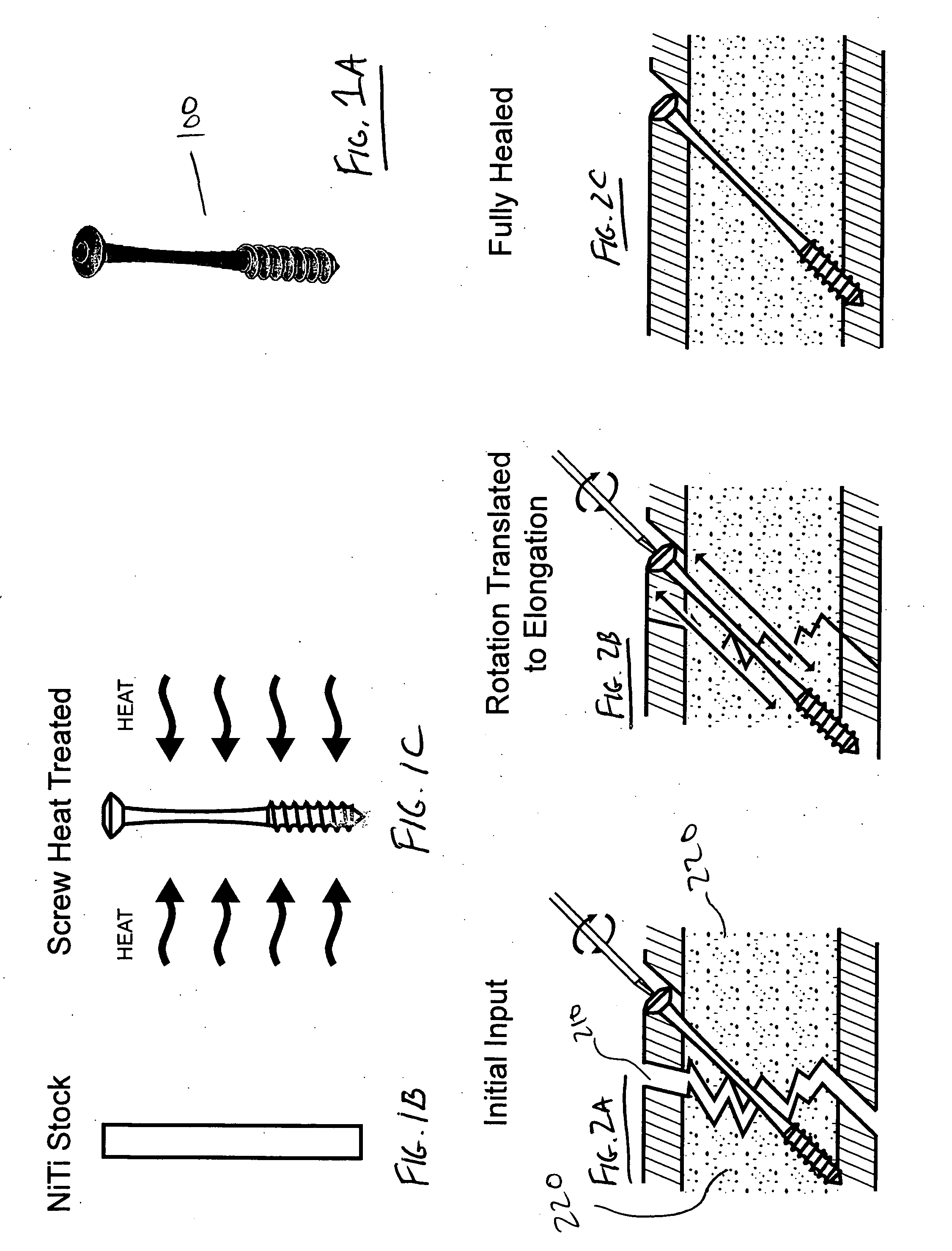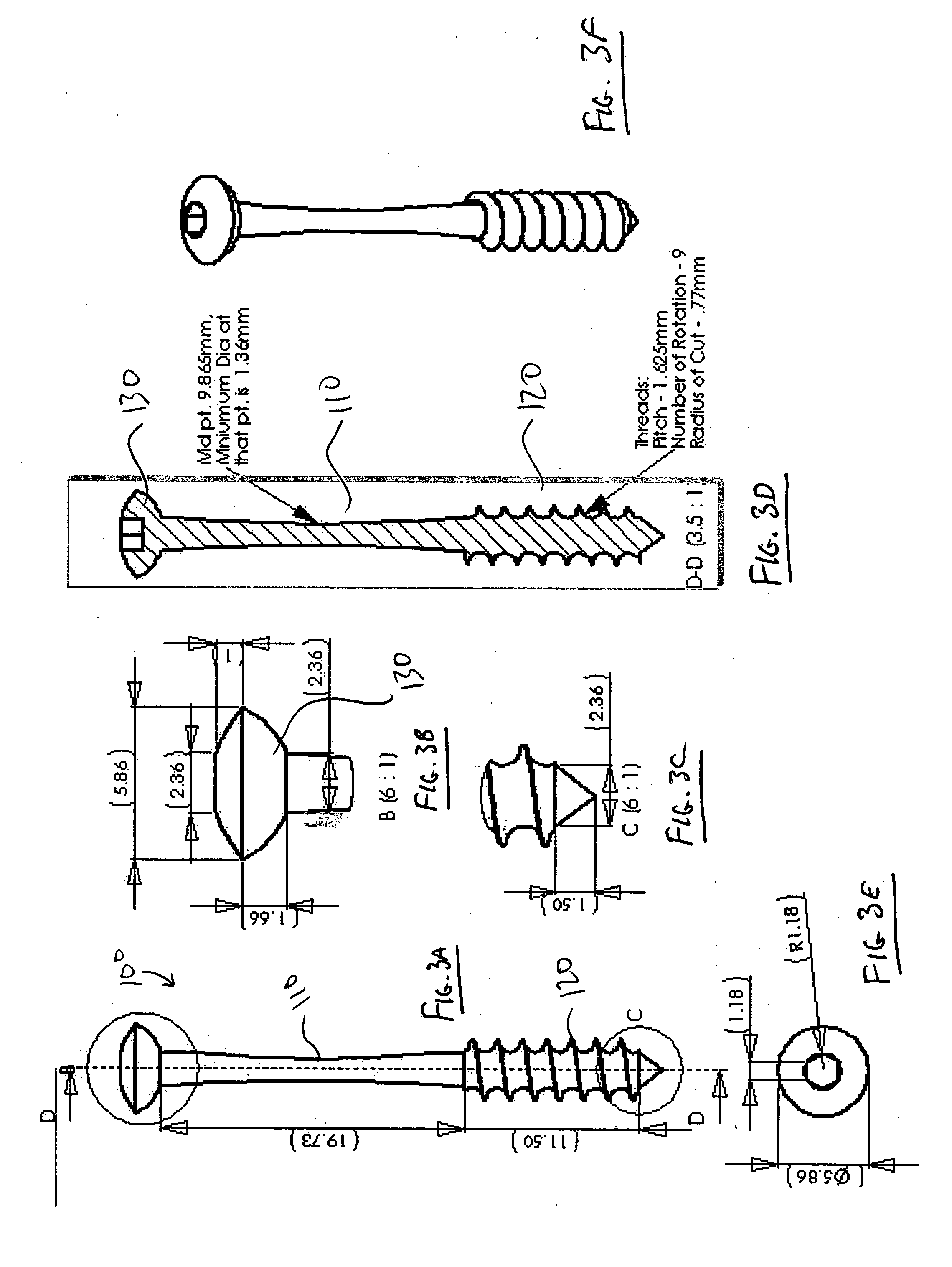Osteosynthetic implants and methods of use and manufacture
a technology of osteosynthetic implants and implants, which is applied in the field of bone fracture repair, can solve the problems of fracture fragments not maintaining compression, skeletal function loss, and unmineralized scar tissue not being able to support the load, and achieve the effect of improving fracture repair characteristics
- Summary
- Abstract
- Description
- Claims
- Application Information
AI Technical Summary
Benefits of technology
Problems solved by technology
Method used
Image
Examples
Embodiment Construction
[0032] It has been determined that when a bone is set and a compressive force is applied to the fracture fixation device, the force between the fragments ends decreases rapidly as a function of time. Ideally, the fixation device is able to maintain a compressive force, which will allow for the continuation of healing through reduction of the fracture gap, and stability of the fracture gap. If this does not occur, a loss of compression may be followed by the lack of union and stability of the fracture site, which in turn reduces the healing. A fracture fixation device is put in place to stabilize the fracture site, however, if the compressive force is not present then micro-motion between the fracture ends may occur. This, in turn, may cause unnecessary resorption, which will lead to non-union of the bone or the presence of large voids. These reasons show the importance of a device to actively match the changes in the body, as well as have a similar response as bone.
[0033] Embodimen...
PUM
 Login to View More
Login to View More Abstract
Description
Claims
Application Information
 Login to View More
Login to View More - R&D
- Intellectual Property
- Life Sciences
- Materials
- Tech Scout
- Unparalleled Data Quality
- Higher Quality Content
- 60% Fewer Hallucinations
Browse by: Latest US Patents, China's latest patents, Technical Efficacy Thesaurus, Application Domain, Technology Topic, Popular Technical Reports.
© 2025 PatSnap. All rights reserved.Legal|Privacy policy|Modern Slavery Act Transparency Statement|Sitemap|About US| Contact US: help@patsnap.com



